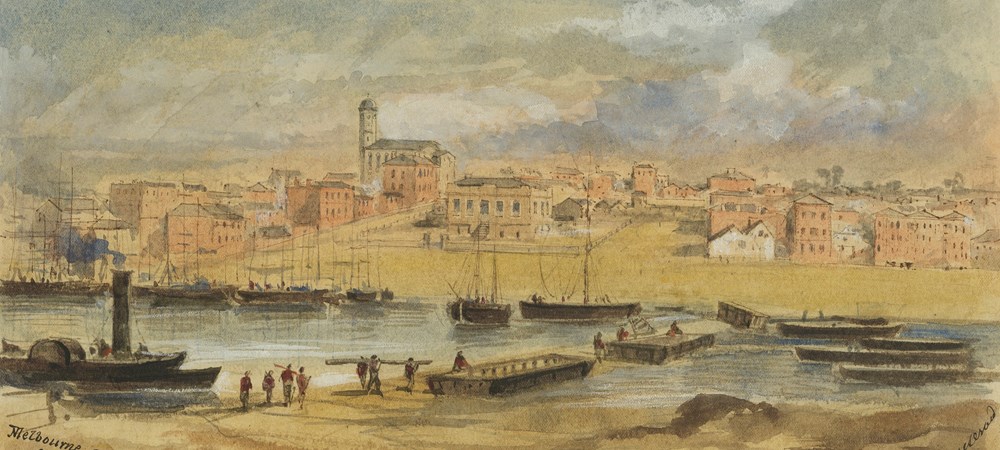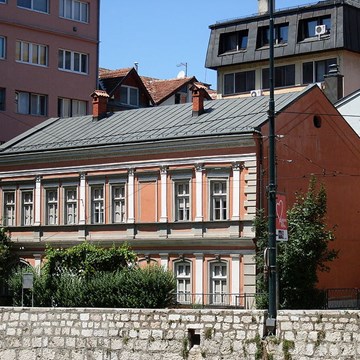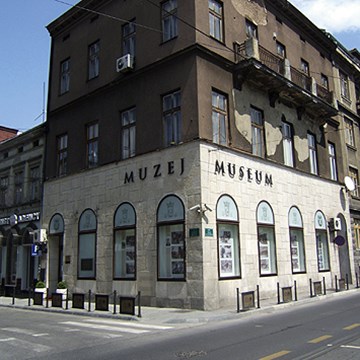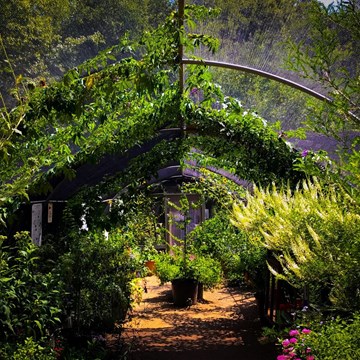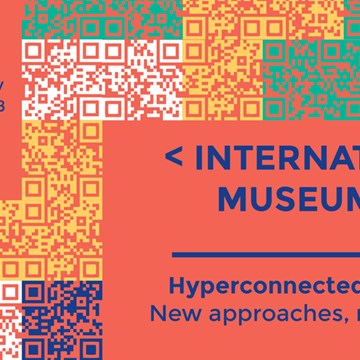Melbourne: Foundations of a City
From bucolic village to bustling metropolis in forty years – this exhibition, 'Melbourne: Foundations of a City' tells the story of the astonishing growth of Melbourne. Dramatic panoramic pictures of the city trace the emergence of a city that by the mid-1880s was known to the world as ‘Marvellous Melbourne’.
Melbourne in pictures
Melbourne is recorded in a wealth of pictures. From the earliest tent pitched by the Yarra, to the sprawling metropolis of 1900, Melbourne projected a vision of itself to the world. We use a selection of these wonderful images to trace, in graphic detail, the emergence of the city we know today.
The first panorama
The very first panoramic drawing of Melbourne was made by architect Samuel Jackson in 1841. It shows a town that is almost unrecognisable as the city we know today. From the walls of the partially constructed Scots Church Jackson recorded streets that meandered around trees and houses, and pathways pitted with tree stumps. Bourke Street was still dotted with 1,000 tree stumps!
Treasures from the archives
Accompanying the panorama we present Robert Hoddle’s original plan for the city grid, along with one of his detailed field notebooks. These are precious records of Melbourne’s beginnings as a city. Also included are the records of the very earliest census returns, completed in 1836 and 1839. The 1839 census records those Aboriginal men who were known to be living in and around the township at the time. It is one of a sequence of significant documents that records the systematic dispossession and exclusion of the Koorie People that accompanied the creation of Melbourne.
A city emerges
Subsequent panoramas present the city as it was in 1875, 1882 and 1900. We see the explosion of growth that followed gold discoveries in the 1850s, then the steady expansion of the city in successive decades. In the 1880s Melbourne boomed again – this time based on property speculation. The city was rebuilt in opulent style, to the admiration of observers who dubbed it ‘Marvellous Melbourne’.
Marvellous Melbourne – Marvellous Smellbourne
But Marvellous Melbourne had a downside. Behind and between the grand boulevards with their opulent buildings, ran little streets and alleys with cramped and crumbling quarters for the city’s poor. Life there was not so marvellous. The drains stank, the water supply was polluted and typhoid fever was rife, so much so in fact that detractors satirised Melbourne as ‘Marvellous Smellbourne’. But for all that, Melbourne remained the wonder of the age.
Did you know?
The first attempt by Europeans to settle Victoria was in 1803. Fear of the French saw a small group of convicts and marines land near Sorrento where they set up camp. Within months the settlement was abandoned for lack of fresh water and the group sailed on to create a settlement in Tasmania instead. A second attempt at Westernport in 1826 met a similar fate. The exhibition presents what is probably the oldest archival record in the public collection of Victoria – surveyor Charles Grimes’ survey of Port Phillip, completed in 1803. We also exhibit several artefacts recovered by Heritage Victoria in an archaeological dig on the site of the Sorrento camp. These are precious relics of Victoria’s earliest European history.
Exhibitions and events

Melbourne as National Captial
Permanent exhibitionFederation By 1900 all of the six self-governing colonies of Australia had resolved to join together to form a new nation. It would be called Australia. The new Commonwealth of Australia came into...
Activities from this museum
We don't have anything to show you here.

